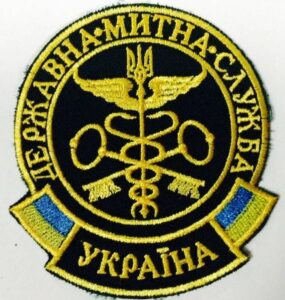
Imports of electric generator sets and rotating electrical converters to Ukraine in January–September 2025 increased 4.2 times compared to the same period in 2024, reaching $1.209 billion, according to data from the State Customs Service (SCS).
According to the SCS, the largest suppliers of equipment were the Czech Republic (19.7% of the total volume, $238.1 million), Romania (18.5%, $223.3 million), and Poland (12.5%, $150.6 million).
For comparison, last year’s leaders were China ($69.8 million), Turkey ($61.4 million), and the Czech Republic ($31.9 million).
In September 2025, imports of generators increased almost threefold compared to September last year, reaching $191.6 million.
Exports of such equipment from Ukraine remain insignificant — $3.52 million in nine months, mainly to the Czech Republic, Latvia, and Bulgaria.
According to the State Customs Service, the sharp increase in imports is associated with the active modernization of energy infrastructure and the continuing demand for autonomous power sources.
The authorities had previously exempted generators and batteries from customs duties and VAT (Cabinet of Ministers resolution of July 2024).
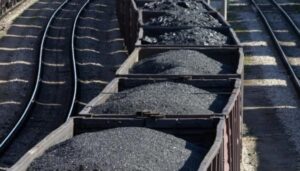
Ukraine increased its imports of hard coal and anthracite (UKTZED code 2701) by 2.2 times (by 1 million 760.155 thousand tons) compared to the same period last year, to 3 million 253.62 thousand tons.
According to the State Customs Service of Ukraine, coal imports amounted to $751.081 million in the first nine months of this year, which is 2.3 times ($426.588 million) more than in January-September 2024.
Coal imports from the US amounted to $308.091 million (41.02%), Australia – $233.507 million (31.09%), the Czech Republic – $72.3 million (9.63%), and other countries – $137.183 million (18.26%).
As reported, in 2024, Ukraine increased coal imports by 2.7 times (by 1 million 145,951 thousand tons) compared to 2023, to 1 million 812,592 thousand tons. In monetary terms, it imported $402.219 million worth of coal, which is 2.2 times more than the previous year ($185.378 million).
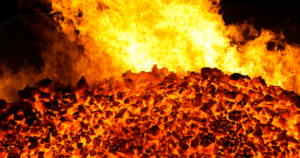
In January-September of this year, Ukraine reduced its imports of coke and semi-coke in physical terms by 4.6% compared to the same period last year, to 491,166 thousand tons.
According to statistics released by the State Customs Service (SCS), coke imports in monetary terms decreased by 10% during this period, to $165.721 million. It was mainly imported from Poland (91.93% of supplies in monetary terms), Indonesia (5.77%), and the Czech Republic (2.26%).
During this period, Ukraine exported 3 tons of coke worth $2,000 to Albania.
As reported, Metinvest suspended the operation of the Pokrovsk Coal Group in January this year due to changes in the situation on the front line, electricity shortages, and the deterioration of the security situation.
Last year, Ukraine increased its imports of coke and semi-coke in physical terms by 2.01 times compared to 2023, to 661,487 thousand tons, importing it mainly from Poland (84.76% of supplies in monetary terms), Colombia (7.74%), and Hungary (2.69%). In monetary terms, imports increased by 81.9% to $235.475 million.
In 2024, the country exported 1,601 thousand tons of 84.76% coke worth $368 thousand to Moldova (99.18%) and Latvia (0.82%), while in January, March, October, and November 2024, there were no exports, whereas in 2023, they amounted to 3,383 thousand tons worth $787 thousand.
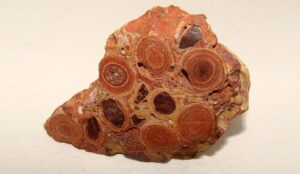
In January-September of this year, Ukraine increased imports of aluminum ore and concentrate (bauxite) in physical terms by 39.4% compared to the same period last year, to 27,219 thousand tons.
According to statistics released by the State Customs Service (SCS), during this period, bauxite imports in monetary terms increased by 24.1% to $3.021 million.
At the same time, imports were mainly from Turkey (81.98% of supplies in monetary terms), China (17.16%), and Guyana (0.86%).
Ukraine did not re-export bauxite in 2025, as in 2024 and 2023.
As reported, in 2024, Ukraine increased its imports of bauxite in physical terms by 77.4% compared to 2023, to 35,173 thousand tons, and in monetary terms by 74%, to $4.107 million. Imports were mainly from Turkey (78.48% of supplies in monetary terms), China (19.48%), and Spain (1.9%).
In 2023, Ukraine imported 19,830 thousand tons of bauxite worth $2.360 million.
In 2022, Ukraine reduced imports of aluminum ores and concentrates (bauxite) in physical terms by 81.5% compared to the previous year, to 945,396 thousand tons. Bauxite imports in monetary terms decreased by 79.6% to $48.166 million. Imports were mainly from Guinea (58.90% of supplies in monetary terms), Brazil (27.19%), and Ghana (7.48%).
Bauxite is an aluminum ore used as a raw material for producing alumina, which is then used to produce aluminum. It is also used as a flux in ferrous metallurgy.
Bauxite is imported into Ukraine by the Mykolaiv Alumina Plant (MAP).

In January-July 2025, Ukraine exported agricultural and food products worth $5.73 billion to the European Union, which is $891 million, or 13%, less than in the same period last year, according to an EU report.
At the same time, Ukraine managed to maintain its fourth place in the list of suppliers of agricultural products to the EU during this period. Ahead of it are Brazil ($9.1 billion), the United Kingdom ($7.8 billion), and the United States ($6.9 billion).
The ranking of the largest suppliers of agricultural products to the EU also includes China ($5.24 billion), Côte d’Ivoire ($5.05 billion), Turkey ($3.68 billion), Vietnam ($2.81 billion), Argentina ($2.57 billion), and Switzerland ($2.51 billion).
In total, agricultural imports to the EU in January-July 2025 are estimated at $96.8 billion (+16%).
Agricultural exports from the EU during the same period amounted to $118.7 billion (+2%). At the same time, $2.1 billion (+17%) worth of goods were supplied to Ukraine.
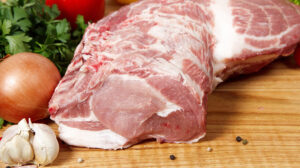
Ukraine has seen a significant increase in imports of fresh and frozen pork. In August 2025, 4.6 thousand tons of meat were imported, which is 48% more than in July, according to the Ukrainian Agribusiness Club (UAC).
The association’s analysts noted that in January-August 2025, Ukraine imported 14.9 thousand tons of pork, which is 7.8 times more than in the same period of 2024, the highest figure since 2022.
The largest purchases were observed in July and August, totaling 7.7 thousand tons. In the first two weeks of September, another 3.2 thousand tons were imported. Experts predict that by the end of the year, purchases will reach at least 25,000 tons, with the majority of deliveries occurring in the second half of the year.
The main suppliers of pork to Ukraine are Denmark, Poland, and the Netherlands.
“The main reason for active imports was the reduction of the pig population in winter to 4.5 million heads, mainly in private households. This led to a shortage of supply in the domestic market and an increase in prices,” explained UACB analyst Maxim Gopka.
According to UACB data, in September, purchase prices for live weight of bacon breeds of pigs ranged from 98 to 100 UAH/kg, depending on the region. Since the beginning of the year, prices have risen by 34%, and by 60% on an annual basis.
Analysts noted that there has been a decline in the cost of live pigs in the EU, which makes their markets attractive for Ukrainian purchases. Thus, imports have become an alternative source of raw materials.
It is likely that a reduction in imports will only be possible through a gradual increase in the pig population, which in the long term will also affect domestic purchase prices. According to the State Statistics Service, as of September 1, 2025, there were 4.8 million pigs in Ukraine, which is 5% less than last year but 7% more than in January. Despite an increase of 330,000 head since the beginning of the year, market supply remains limited. The recovery is mainly taking place in the enterprise sector, which currently accounts for 65% of the livestock population, according to the UCAAB.